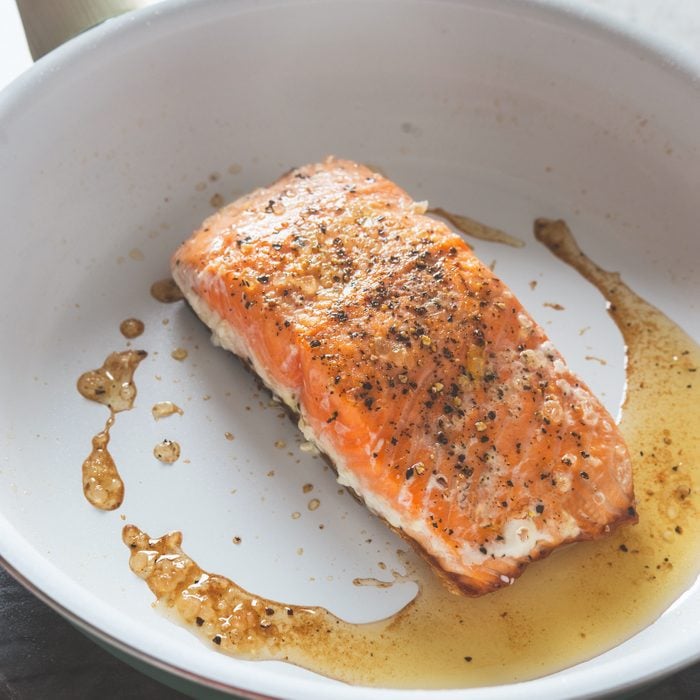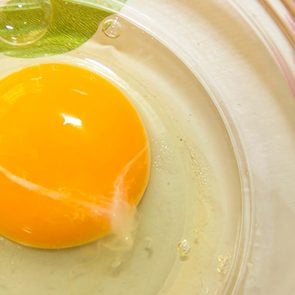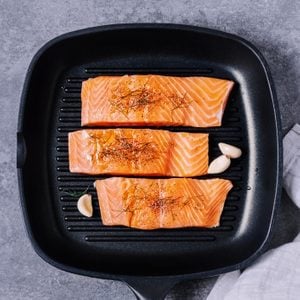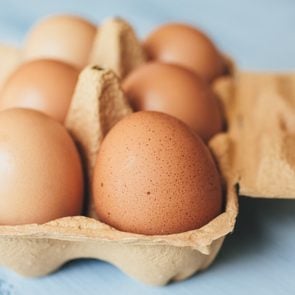If You See White Stuff on Your Salmon, This Is What It Means
Updated: Oct. 22, 2021

It isn't pretty, but it's safe to eat.
If you’re looking for a healthy weeknight dinner, there’s nothing quicker than an easy salmon recipe. There are tons of benefits to eating more seafood, and with a lemon-butter sauce, it looks good and tastes delicious!
But when I pulled my latest salmon dinner out of the oven, it looked less flaky and more white and globby. If you’ve ever baked or roasted a salmon filet, you’ll know what I’m talking about. Which got me wondering—what exactly is that white stuff on salmon?
The white stuff on salmon is perfectly normal
To get an expert opinion, I spoke to Taste of Home‘s Executive Culinary Director Sarah Farmer, who explained that it’s a harmless protein called albumin. According to her, “It’s nothing to be scared of and it’s totally safe to eat, but I think we would all admit—it’s nasty.”
When salmon is raw, you can’t see the albumin inside—but as the fish cooks, it thickens and forms the gooey white stuff you see on salmon skin. When asked if there was any benefit to it, she explained that it’s made up of protein, but then again, so is the salmon. Her final word on it? “I’m going to opt for the fish and I’ll flake off the albumin, even though it could be a protein-booster, I suppose.” Is the white stuff on baby carrots and the white stuff on oranges equally harmless?
How to make white stuff–free salmon
Whether you’re cooking up a quick dinner for yourself or presenting it to other people, you always want your food to look inviting and appetizing. When it comes to salmon, stick to two rules to get your perfectly flaky, albumin-free crust: don’t cook salmon too quickly, and don’t overcook it—the flesh should separate easily into layers with gentle pressure from a fork. Brining salmon is one method of possibly reducing the albumin, as the salt breaks down the muscle fibers of the fish and keeps them from squeezing out the protein. If you have the time, you can try it—but since most of us don’t, it’s enough to keep these rules in mind.
Sarah’s preferred way of cooking salmon is oven-roasting it, keeping it low and slow. She starts with room-temperature fish, placing it skin side down to protect from direct heat, and she advises keeping an eye on the temperature of the fish. For tender, succulent salmon, cook to a medium doneness of 125°F. Pan-searing also works, but make sure to start skin side down before flipping to add some brownness if needed. Of course, you should always have a meat thermometer around to check the temperature, and a fork or tongs to check the tenderness of the fish. Next, find out what that red stuff in your lettuce is and what it means if your chocolate looks dusty!
Source:
- Taste of Home Executive Culinary Director Sarah Farmer



